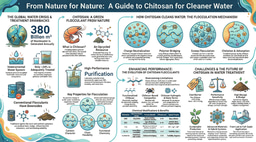Control of Single-Ligand Chemistry on Metal Nanoclusters
Published in Chemistry

Colloidal nanoparticles are extremely tiny particles of material which tend to clump together for stability. They can be widely produced as long as the surface is protected by capping agents, which have high affinity to surface atoms and reduce its reactivity. With this knowledge, in a typical synthetic method of nanoparticles, people can simply introduce excess amounts of surface ligands and then turn their efforts to size- and morphology-control.
A similar situation exists in a subclass of nanoparticles with even smaller size, ligand-protected metal nanoclusters (NCs) with a core size of about 1 nm. The difference is that these metal NCs are so small that we can count their metal atoms and surface ligands, and they have atomically precise structures. Taking thiolate-protected gold (Au) NCs as an example, they can be described as AunSRm (SR denotes thiolate ligand), where n and m represent the number of Au atoms and thiolate ligands, respectively. The n value determines their size, and the way the atoms are packed determines their structure. Naturally, the number of surface ligands (m value) is determined as NCs of different sizes require different numbers of surface ligands to passivate their surface.
Our group has also put a lot of efforts into realizing the size control of water-soluble metal NCs (See more information on our website: https://blog.nus.edu.sg/xiegroupnus/). However, in one of our recent studies, we found that the size of metal NCs (n value) is not the certain prerequisite of the number of ligands on their surface. Instead, a single surface ligand can be precisely added and eliminated on Au NCs surface, as demonstrated in [Au25SR18]−, which is the flagship cluster of AunSRm family. In our paper, we demonstrate the reversible conversion between the water-soluble [Au25SR18]− and [Au25SR19]0 an oxidative etching/reduction cycle (Figure 1).

The addition reaction of surface ligand was first discovered in the purification process of [Au25MHA18]− (MHA = 6-mercaptohexanoic acid) by dialysis, which destabilized the precursor and resulted in [Au25MHA19]0, as confirmed by polyacrylamide gel electrophoresis (PAGE) and electrospray ionization mass spectrometry (ESI-MS). This motivates us to consider the possibility of precise control of the number of surface ligand number at a given cluster size. We gave up the classical method which does not control the amount of protecting ligands used in synthesis. Instead, we used a stoichiometric amount of ligands in the oxidative etching reaction, which can create mild reaction conditions to stabilize the metastable products. Then, through a mild CO-reduction method, we further realize the reverse process: eliminating a thiolate ligand and regenerating the [Au25MHA18]– NCs.
Our work provides one possible direction to precisely control the surface ligand number on metal NCs, thus, to find more ‘space’ in the surface engineering of metal NCs. https://www.nature.com/articles/s41467-020-19327-2
Follow the Topic
-
Nature Communications

An open access, multidisciplinary journal dedicated to publishing high-quality research in all areas of the biological, health, physical, chemical and Earth sciences.
Related Collections
With Collections, you can get published faster and increase your visibility.
Women's Health
Publishing Model: Hybrid
Deadline: Ongoing
Advances in neurodegenerative diseases
Publishing Model: Hybrid
Deadline: Dec 24, 2025


Please sign in or register for FREE
If you are a registered user on Research Communities by Springer Nature, please sign in